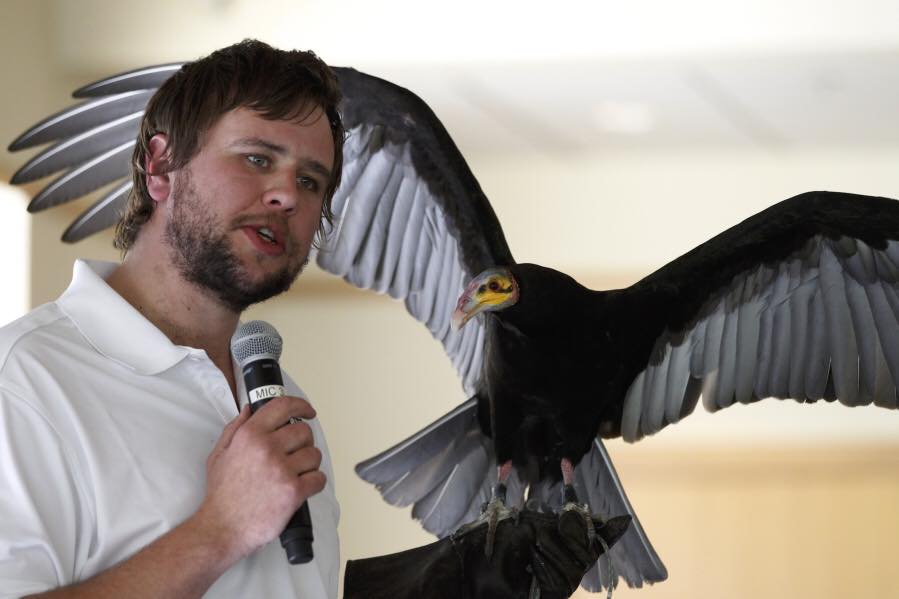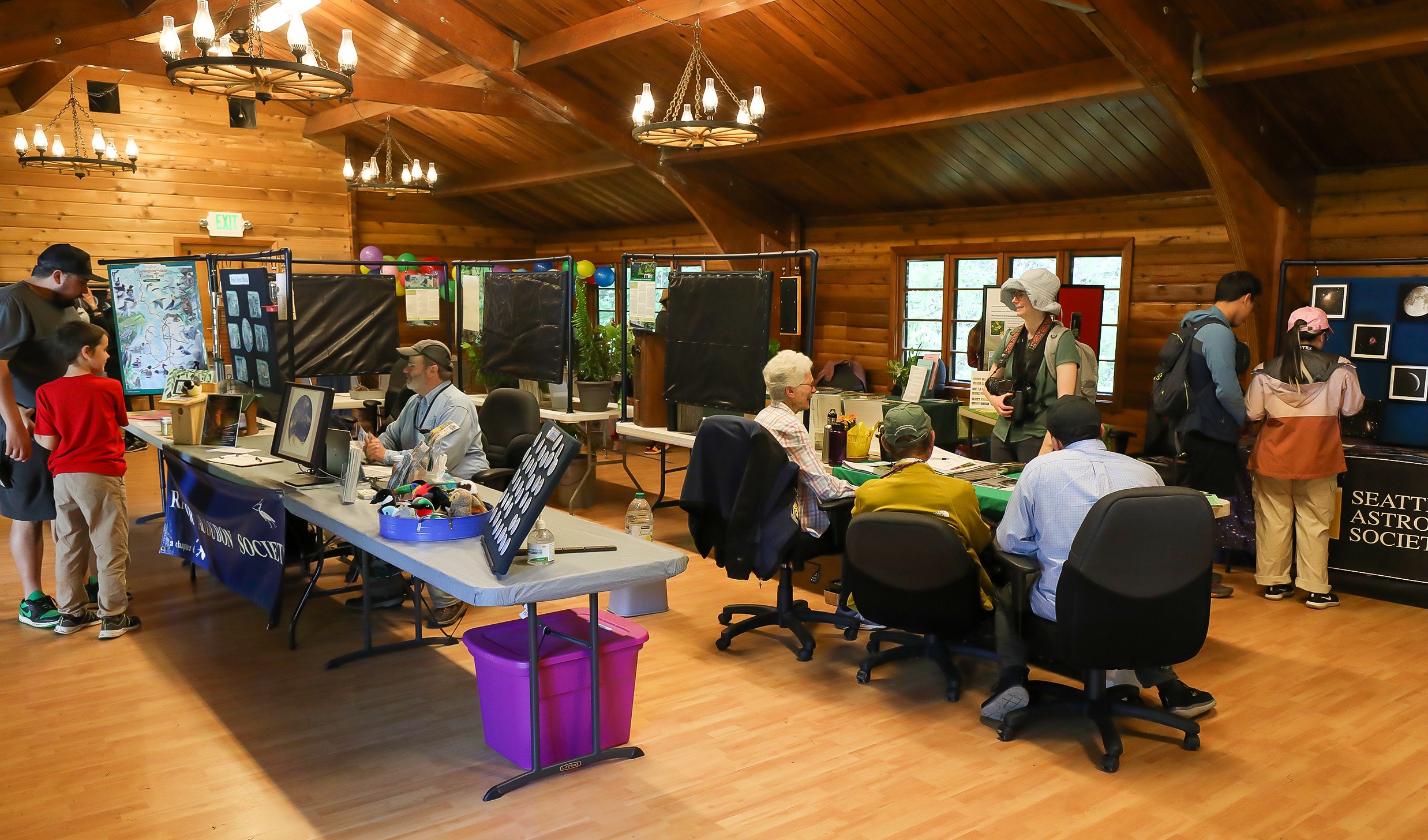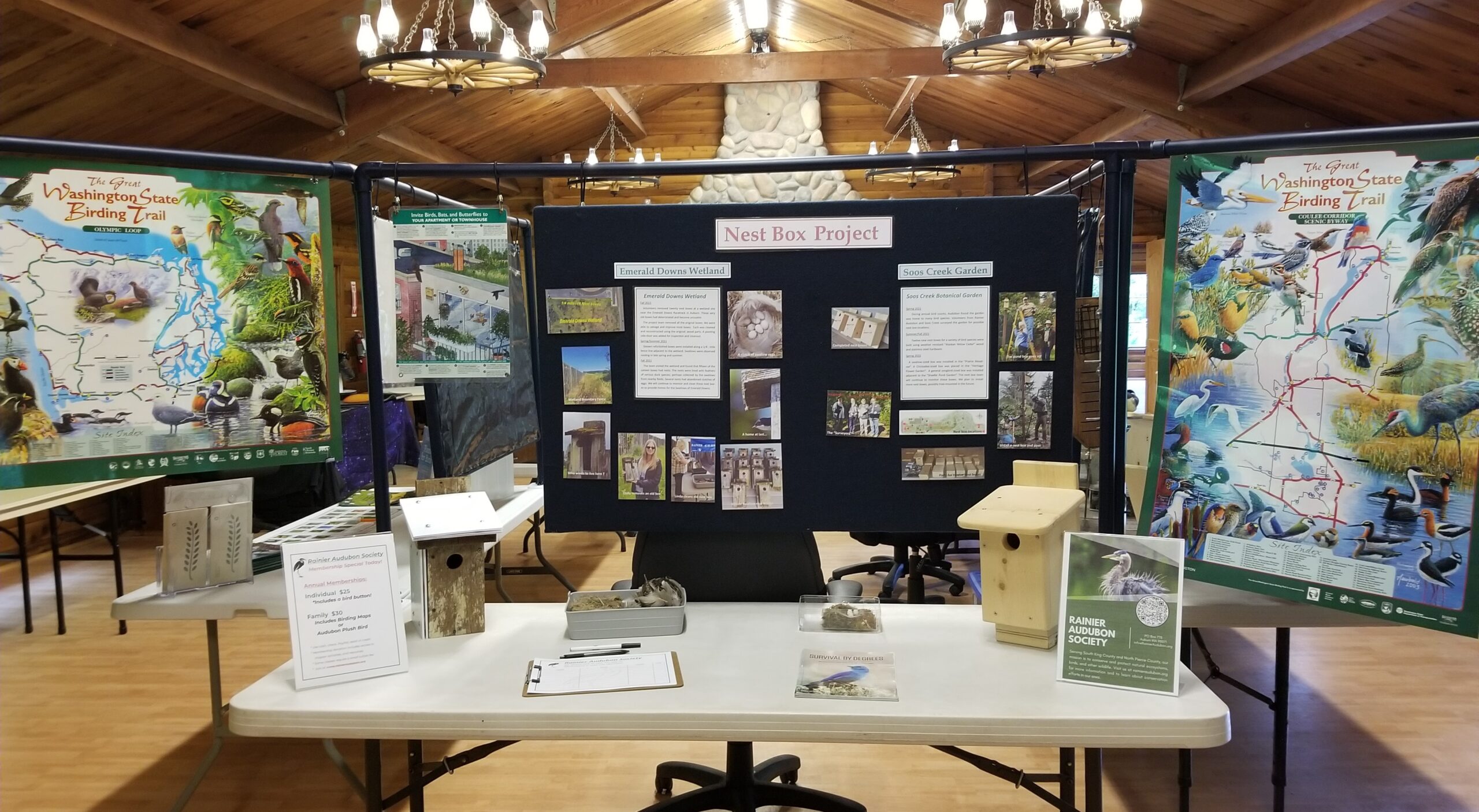
Mewsings from Millie – April 2024
(Reprinted with permission from Burien Wild Birds Unlimited)

From what people are saying it sounds like the birds are on the move again, heading northward for the spring and summer. One term I’ve heard mentioned is “flyway”. Is this a new way to fly, an airport runway, the route of a hot air balloon, or a spiritual belief of flies? I had no idea so, being curious, I set about to find out.
A flyway, I learned, is a traditional migration pathway or corridor that birds follow in their annual travels between breeding and wintering areas.In North America there are four flyways: the Atlantic, the Mississippi, the Central, and the Pacific.
What makes each flyway unique, and what do they offer the birds that travel them?
The Atlantic Flyway extends from northeast Canada, Newfoundland and Nova Scotia down the eastern coast of the United States through the Caribbean to South America. This avian superhighway is used by more than 500 bird species and millions of individual birds. The United States section of the Atlantic Flyway is home to 139 global Important Bird Areas. Birds of the Atlantic Flyway live in forests, on beaches, and in coastal wetlands. National Audubon has designated 32 species of the Atlantic Flyway “priority species”, meaning birds in need of conservation. This list includes the American Oystercatcher, Brown Pelican, Red Knot, Sanderling, and the Snowy Plover.
The Mississippi Flyway hosts nearly half of America’s bird species and about 40% of its waterfowl. The flyway extends north to Canada’s tundra and boreal forest. It includes the vast MacKenzie River watershed and follows the mighty Mississippi River through America’s heartland to the Gulf Coast and as far south as Patagonia. Birds of the Mississippi Flyway live in wetlands, forests, grasslands and coastal areas. The Mississippi River Delta ecosystem in Louisiana supports 100 million migratory, nesting and wintering birds! There are 27 priority species in the Mississippi Flyway. These include: the Greater Prairie Chicken, Piping Plover, Ruddy Turnstone, Prothonotary Warbler, and Grasshopper Sparrow.
The Central Flyway extends from the grasslands of the Great Plains, the heartland’s wetlands and rivers, and the magnificent Rocky Mountains to the western Gulf Coast. Many of its migratory birds winter in Central and South America. Some migrate across the Western Hemisphere as far north as the Arctic Circle and others to Patagonia in southern South America. It is home to 65 global Important Bird Areas. The 17 priority species that depend on this flyway include the Greater Sage-Grouse, Least Tern, Reddish Egret, Sandhill Crane, and the Whooping Crane.
Last but certainly not least is ‘our’ flyway, the Pacific Flyway. Each year, right in our own backyard, at least a billion birds migrate from Central and South America to the North Slope of Alaska. These birds depend on a variety of habitats ranging from Arctic tundra and northwest rainforest to tropical beaches and mangroves. The Pacific Flyway is home to 161 global Important Bird Areas! 24 species in this flyway are considered priority species including the Black-footed Albatross, Black-necked Stilt, Long-billed Curlew, Swainson’s Hawk, and the Western Sandpiper.
It is interesting to note that each flyway has a Flyway Council which is a formal organization composed of one member from each state and province in the flyway. As of 2013 Mexico has also provided representation at Pacific and Central Flyway Council meetings.
Now you know a flyway is not the path of a hot air balloon or new runway at Sea-Tac Airport. Flyways are for the birds, so let’s protect them.
Gotta fly! Until next time, MillieThe Muse of Mews



